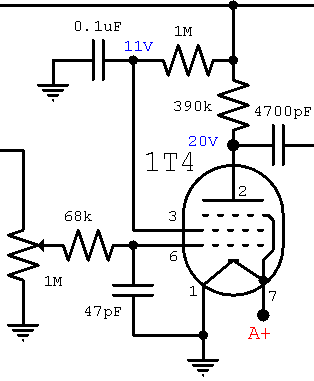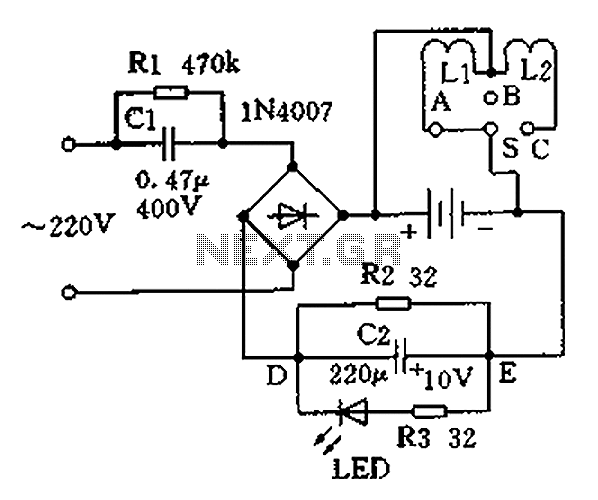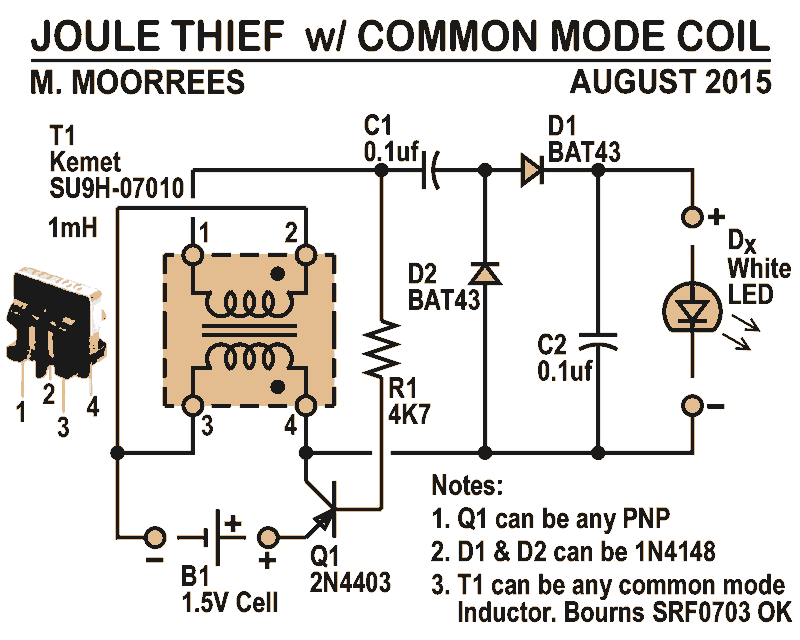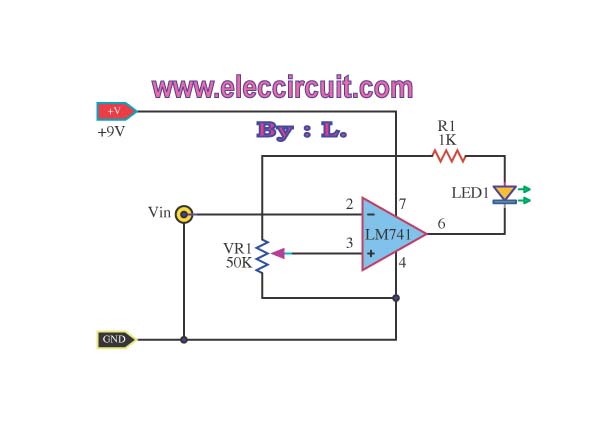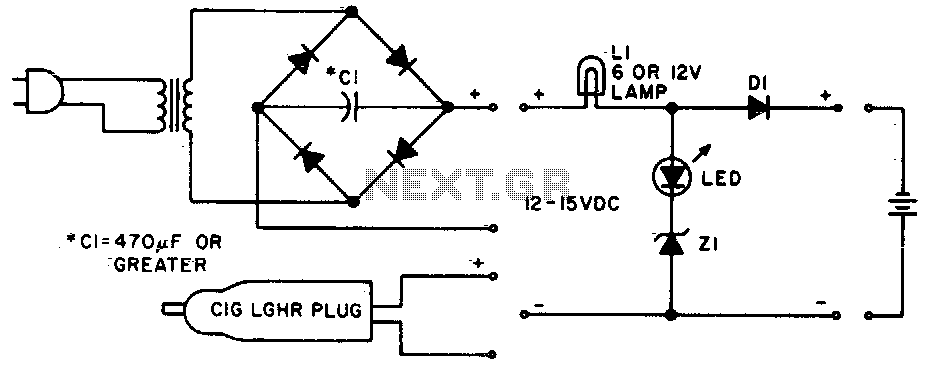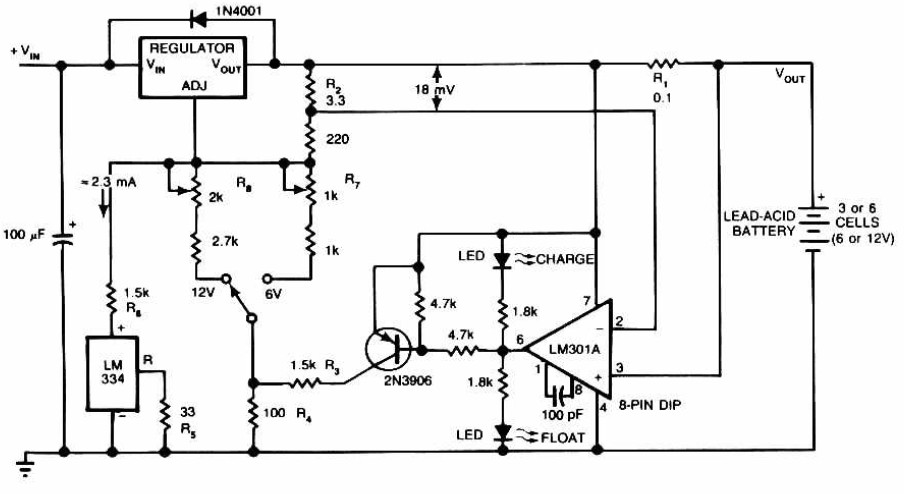
battery charger circuits
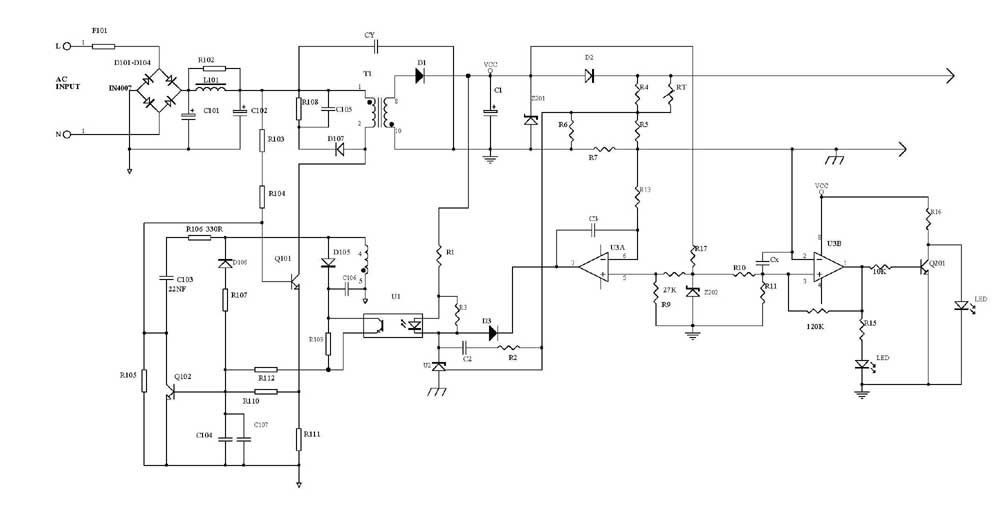
Several schematic drawings of battery charger circuits are provided. These circuits cover 5W to 200W for NiCd, NiMH, Lead-Acid, Li-Ion/Polymer, and LiFePO4 battery packs. The charger circuit files aim to assist users in selecting the appropriate chargers and to enhance their understanding of the products.
The collection of battery charger circuit schematics encompasses a diverse range of designs suitable for various battery chemistries and power ratings. The circuits are designed for charging capacities ranging from 5 watts to 200 watts, accommodating different types of batteries including Nickel-Cadmium (NiCd), Nickel-Metal Hydride (NiMH), Lead-Acid, Lithium-Ion (Li-Ion), Lithium Polymer (Li-Po), and Lithium Iron Phosphate (LiFePO4).
Each schematic is tailored to the specific requirements of the battery type, ensuring optimal charging efficiency and safety. For instance, NiCd and NiMH batteries typically require a constant current charging method with temperature compensation to prevent overcharging, while Lead-Acid batteries often utilize a two-stage charging process involving bulk and float charge phases. Li-Ion and Li-Po batteries require precise voltage regulation and current limiting to prevent damage, necessitating the incorporation of specialized charging ICs that manage the charging cycle effectively.
The provided schematics include essential components such as voltage regulators, current sensors, and protection circuitry to safeguard against overcurrent and short circuits. Additionally, some designs may feature microcontroller integration for enhanced functionality, such as programmable charging profiles or communication interfaces for monitoring and diagnostics.
This comprehensive array of charger circuits serves as a valuable resource for engineers and hobbyists alike, facilitating informed decisions regarding charger selection and implementation while promoting a deeper understanding of battery management systems.Here we provided several schematic drawings of battery charger circuit. These circuits covered 5W~200W NiCd, NIMH, Lead-Acid, and Li-Ion/Polymer, LiFePo4 battery packs. We hope chargers circuits files can help our users to select correct chargers also can help them to get a good understanding about our products. 🔗 External reference
The collection of battery charger circuit schematics encompasses a diverse range of designs suitable for various battery chemistries and power ratings. The circuits are designed for charging capacities ranging from 5 watts to 200 watts, accommodating different types of batteries including Nickel-Cadmium (NiCd), Nickel-Metal Hydride (NiMH), Lead-Acid, Lithium-Ion (Li-Ion), Lithium Polymer (Li-Po), and Lithium Iron Phosphate (LiFePO4).
Each schematic is tailored to the specific requirements of the battery type, ensuring optimal charging efficiency and safety. For instance, NiCd and NiMH batteries typically require a constant current charging method with temperature compensation to prevent overcharging, while Lead-Acid batteries often utilize a two-stage charging process involving bulk and float charge phases. Li-Ion and Li-Po batteries require precise voltage regulation and current limiting to prevent damage, necessitating the incorporation of specialized charging ICs that manage the charging cycle effectively.
The provided schematics include essential components such as voltage regulators, current sensors, and protection circuitry to safeguard against overcurrent and short circuits. Additionally, some designs may feature microcontroller integration for enhanced functionality, such as programmable charging profiles or communication interfaces for monitoring and diagnostics.
This comprehensive array of charger circuits serves as a valuable resource for engineers and hobbyists alike, facilitating informed decisions regarding charger selection and implementation while promoting a deeper understanding of battery management systems.Here we provided several schematic drawings of battery charger circuit. These circuits covered 5W~200W NiCd, NIMH, Lead-Acid, and Li-Ion/Polymer, LiFePo4 battery packs. We hope chargers circuits files can help our users to select correct chargers also can help them to get a good understanding about our products. 🔗 External reference
